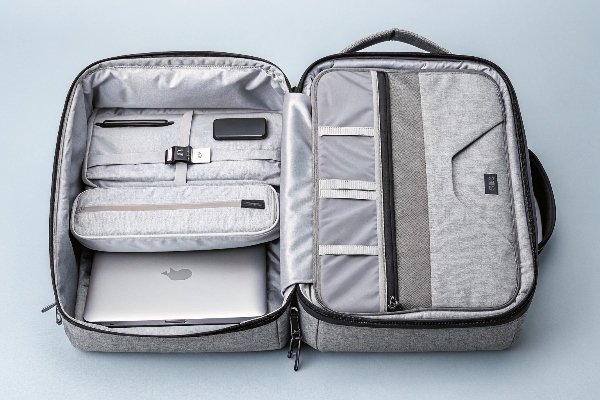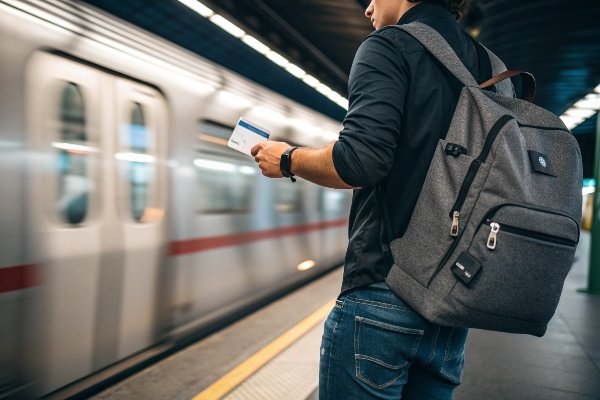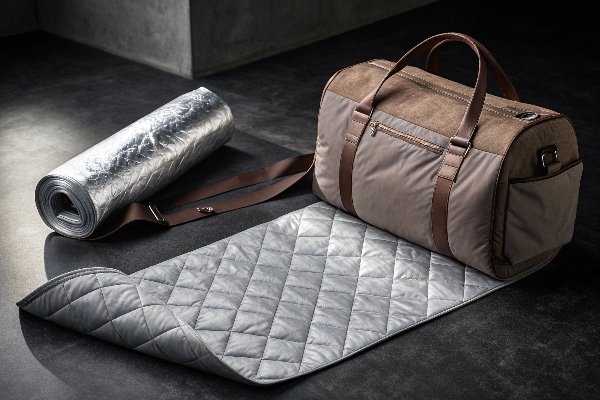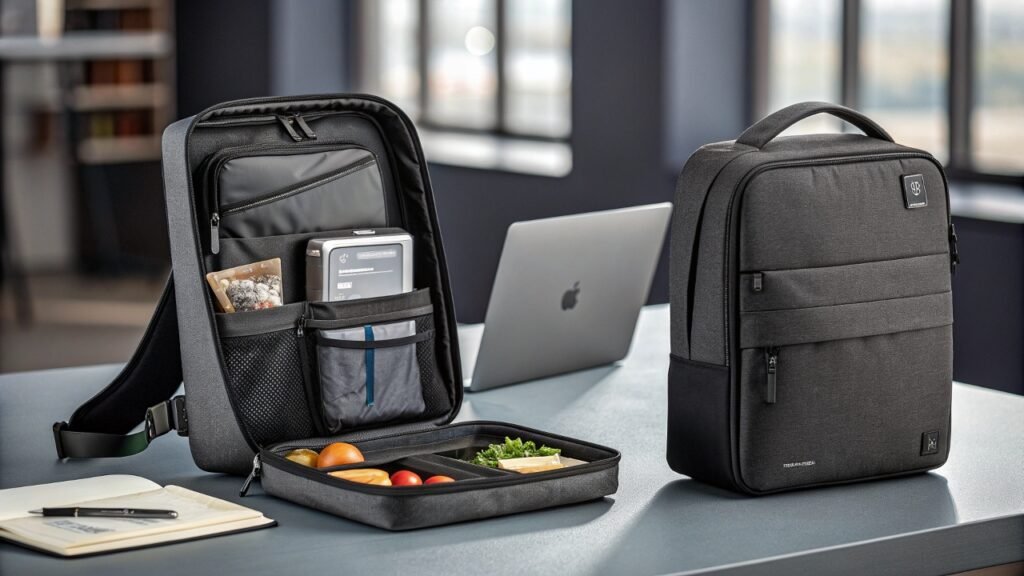The modern professional juggles a laptop, lunch, gym clothes, and personal items every day. Forcing them to carry multiple bags is inconvenient, unprofessional, and a missed opportunity for your brand.
The solution is manufacturing a true "work-life" bag with integrated, purpose-built compartments. This involves combining padded tech sleeves, insulated food sections, and general storage into one smart, cohesive design that solves the challenges of the hybrid workplace.

When the world shifted to hybrid work, I saw a fundamental change in what people needed from their daily bag. It was no longer just for the commute; it became a mobile locker, a portable pantry, and a remote office all in one. A simple backpack with one big pocket just doesn't work anymore. As manufacturers, we had to evolve. We began treating the inside of a bag like an architectural space, using our technical expertise to design and build distinct, functional zones. This is the future, and it represents a massive opportunity for brands that are ready to innovate.
How Can You Combine Laptop, Lunch, and Leisure in One Bag Design?
Your customers try to carry everything in one bag, risking coffee spills on laptops and condensation on important documents. This daily anxiety creates a problem that your brand can solve.
The design solution is creating physically separate, purpose-built zones. A padded, shock-absorbent sleeve protects electronics, while an insulated, waterproof compartment contains food and drink, all seamlessly integrated into a single, stylish exterior.

Engineering a bag that can safely house a warm lunch next to a cold laptop is one of the most common challenges clients bring to us. It's not as simple as adding a fabric divider. It requires a deep understanding of material science and complex construction. At our Guangzhou R&D center, we approach this as an engineering problem. We leverage our experience from different product lines to create a truly integrated solution. For the tech section, we use the same shock-absorbent padding and soft linings found in our specialized data line and electronics cases. For the food section, we pull from our lunch bag manufacturing expertise, using food-grade, leak-proof insulated materials. Our advanced fabric composite process allows us to fuse these specialized materials into the bag's structure without adding unnecessary bulk or creating awkward seams. This turns a simple bag into a high-value, problem-solving product.
Is Your Brand Solving the Commuter's Dilemma?
Today's commuter faces a daily puzzle: how to carry everything they need for a varied day without looking like they're going on a week-long camping trip. A standard bag just isn't smart enough.
Yes, you can solve this by offering "smart daily bags" that prioritize intelligent organization and comfort. The market is booming for designs that feature ergonomic support, easy-access pockets, and dedicated tech-friendly features like cable pass-throughs.

A "smart" bag isn't just about electronics; it's about smart design that makes the user's journey easier. Think about the small moments in a commute: fumbling for a transit card, untangling headphones, or needing a quick charge. A well-engineered bag anticipates these needs. Our design process focuses heavily on user experience. We design quick-access pockets on the exterior for keys and cards. We build in strap organizers and hidden pockets for security. We can even integrate discreet cable pass-throughs that allow a phone to be charged from a power bank stored inside the bag. These thoughtful details, combined with ergonomic, padded shoulder straps and back panels, transform a standard bag into a premium commuting solution. This is a fast-growing market, and having these features can become a major competitive advantage for your brand.
How Do You Technically Integrate Insulated and Tech Compartments?
You want to create a multi-functional bag, but you're concerned about the manufacturing complexity. You worry that combining different materials and functions will result in a bulky, unattractive, and expensive product.
The integration is achieved through advanced pattern-making and fabric composite technology. We create patterns that treat each compartment as a separate module, then use lamination and precision stitching to assemble them into a sleek, unified bag.

This is where our core manufacturing strengths really shine. Integrating these specialized compartments is a technical challenge, but it's one we have perfected. Here’s a look at how we do it.
The Technical Integration Process
-
Modular Pattern Design: First, our CAD specialists in Guangzhou design the bag in a modular way. The tech sleeve, the insulated pod, and the main storage area are treated as individual components with unique material requirements. This allows us to optimize the shape and function of each part before assembly.
-
Material Compositing: We then create the specialized panels. For the tech compartment, this means laminating layers of high-density foam between a durable exterior fabric and a soft, anti-scratch liner. For the insulated section, we bond a waterproof exterior fabric to a layer of closed-cell insulation and a leak-proof, food-grade liner (like PEVA). This composite approach creates high-performance panels that are thin yet effective.
-
Precision Assembly: Finally, our skilled technicians in the Henan factory assemble these modules. We use reinforced stitching techniques to ensure the seams can handle the stress of different loads. The precision of our process ensures there are no gaps or weak points, resulting in a durable, sleek, and highly functional final product. This is a key part of our custom manufacturing service.
Conclusion
The future of daily bags is multi-functional. By partnering with a manufacturer that has mastered the technical integration of work, life, and leisure, you can launch innovative products that dominate the hybrid-era market.

